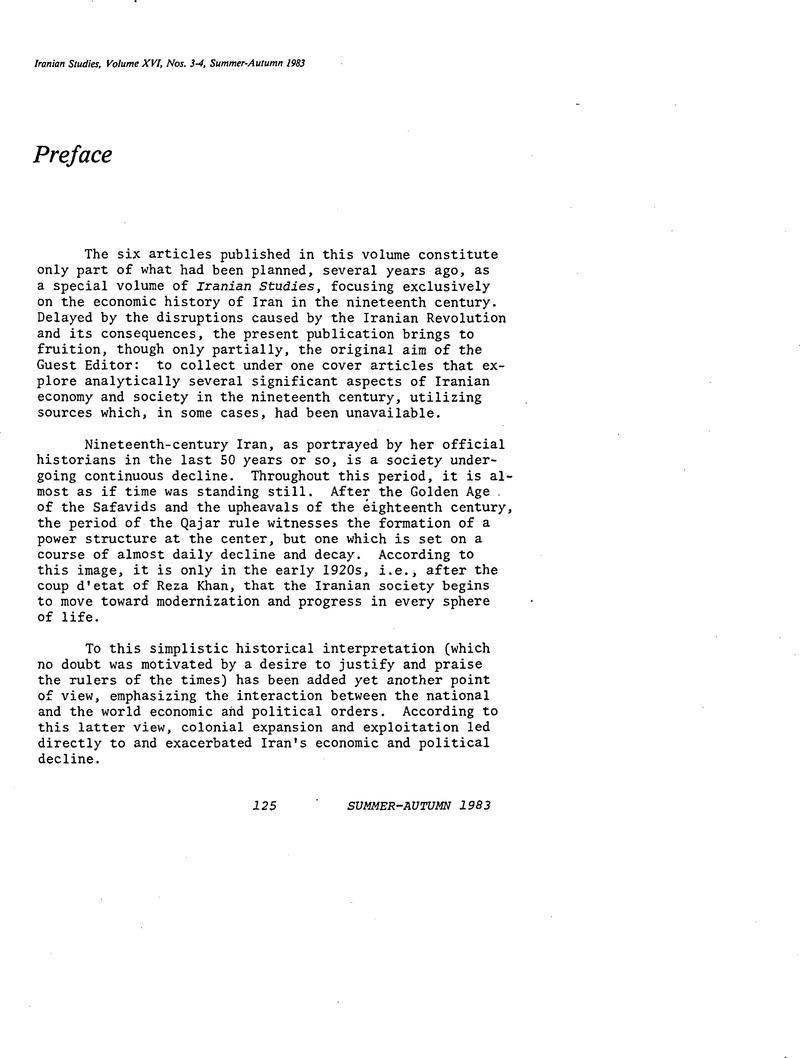No CrossRef data available.
Article contents
Abstract

- Type
- Other
- Information
- Iranian Studies , Volume 16 , Issue 3-4: Studies on the Economic and Social History of Iran in the Nineteenth Century , Summer-Autumn 1983 , pp. 125 - 135
- Copyright
- Copyright © Association For Iranian Studies, Inc 1983
References
Notes
1. Issawi, Charles, The Economic History of Iran, 1800-1914 (Chicago: University of Chicago Press, 1971).Google Scholar
2. Pakdaman, Nasser, “Mirza Abdolgaffar va ‘Tashkhis-e nofuse dar-al-khalafeh,’” Farhang-e Iran-Zamin, Vol. 20 (1353), p. 344.Google Scholar
3. Nowshirvani, V. F., “The Beginning of Commercialized Agriculture in Iran,” in The Islamic Middle East 700-1900: Studies in Economic and Social History, ed. by Udovitch, A. L. (Princeton, N.J.: Darwin Press, 1981), pp. 547–591.Google Scholar
4. A. Ashraf and H. Hekmat, “Merchants and Artisans and the Developmental Processes of Nineteenth Century Iran,” ibid., pp. 725-750.
5. Issawi, Charles, “Tabriz-Trabzon Trade, 1830-1900: Rise and Decline of a Route,” International Journal of Middle East Studies, Vol. 1 (1970), pp. 18–27.CrossRefGoogle Scholar
6. Based on the results of household and population censuses prepared by the author with the collaboration of A. Mahdavi (in press).
7. Ibid.
8. N. Pakdaman and K. Esfahani, “Kashan, Qazvin va Hamadan dar sad sal-e pish,” Alefba (1982), p. 68.
9. N. Pakdaman, Mashhad: Jam'iyat va Jame'eh (in press).
10. Ville de Paris, Musee de la monde et du Costume. La mode du chale cachemire en France (Paris, 1982), p. 15.Google Scholar
11. Abel, Wilhelm, Crises agraires en Europe (XIII-XX siecle) (Paris: Flamarion, 1973), p. 459.Google Scholar
12. Labrousse, Ernest, La crise de l'economie francaise a la fin de l'ancien regime et au debut de la Revolution (Paris: P.U.F., 1943).Google Scholar


